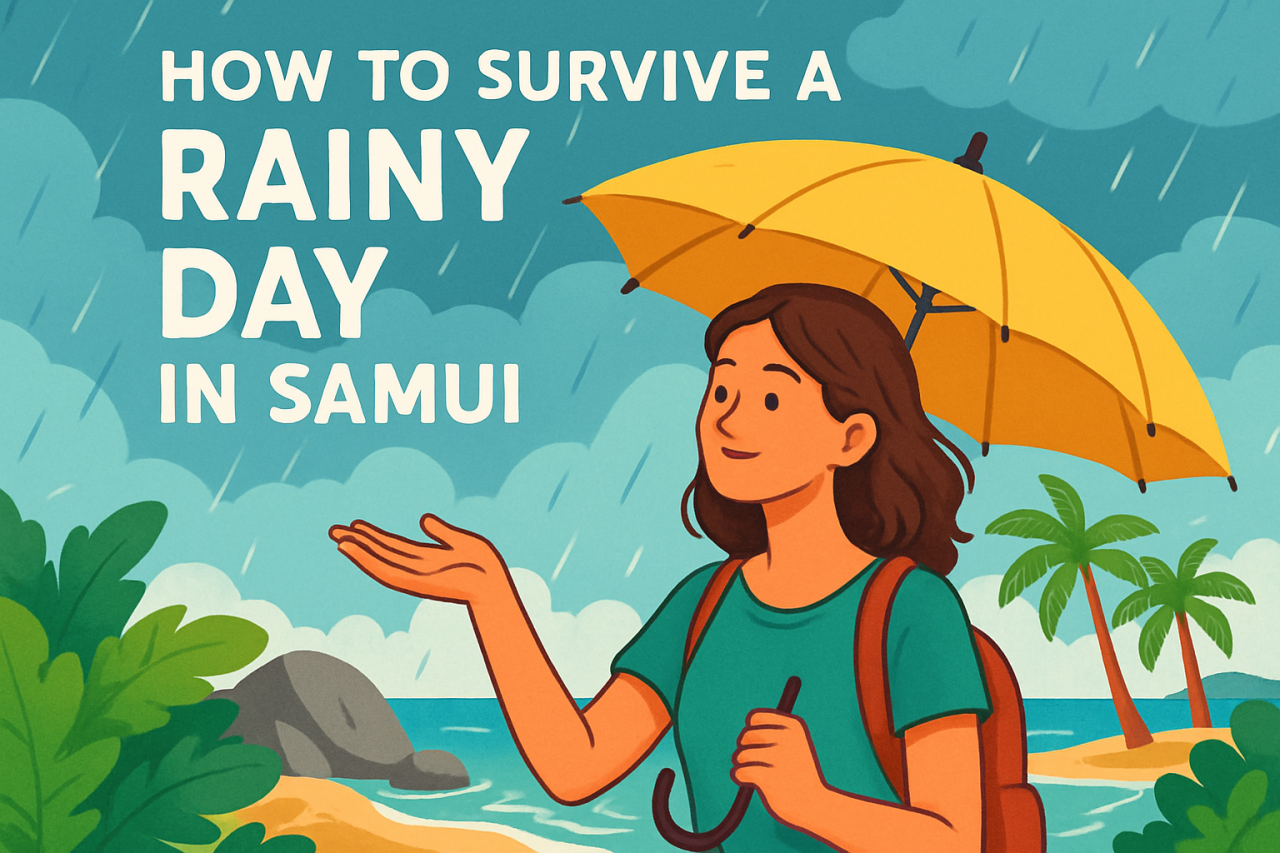How to Survive a Rainy Day in Samui: A Guide to Tropical Downpours and Unexpected Delights
There’s a peculiar romance in the rain that falls on Koh Samui. It sweeps up from the Gulf of Thailand in great, slate-gray sheets—sometimes a surprise, sometimes a slow, ponderous build, as clouds gather like conspirators on the horizon. For those who arrive on this storied island with visions of sun-bleached sands and turquoise water, a sudden monsoon can feel like the universe has misplaced your vacation order. But as I learned one sodden November, Samui in the rain is less a disappointment and more an invitation: to slow down, to look inward, and to discover the subtle pleasures that only reveal themselves when the world is washed clean.
Rainy Day Rituals: Temples, Tea, and Thai Wisdom
While the storms may send beachgoers scurrying for shelter, the island’s temples become hushed sanctuaries. Wat Plai Laem, with its 18-armed Guanyin statue and shimmering lotus ponds, is particularly enchanting in the rain—the colors seem deeper, the air cooler, the scent of incense more pronounced. There is a kind of hush here, broken only by the gentle patter on the tiled rooftops and the distant murmur of chanting. You can search for it on Google Maps by typing: Wat Plai Laem.
If the rain is of the persistent, all-day variety, I suggest seeking solace in a teahouse. The Wild Tribe Superfood Cafe & Juice Bar in Bophut is a worthy refuge, all rattan chairs and verdant potted plants, with a menu that reads like a love letter to wellness. Order a pot of Thai lemongrass tea and watch the rain bead on the windows. For those who appreciate the subtle theatre of a well-made cappuccino, The Road Less Travelled Samui in Nathon offers just the right blend of literary ambiance and caffeine. You can search for it on Google Maps by typing: The Road Less Travelled Samui.
Market Adventures: Shelter Among the Stalls
Samui’s markets, mercifully roofed, hum with life regardless of the weather. At Fisherman’s Village Walking Street (Friday evenings only), locals and travelers mingle beneath a patchwork of tarps and awnings, perusing everything from handwoven scarves to skewered prawns. There’s a camaraderie born of shared inconvenience—everyone dodging puddles and steam, huddled under tarps as the rain drums its own rhythm overhead.
For a less crowded, more local experience, I recommend the Lamai Night Market. Here, the rain only adds to the sensory overload: the sizzle of woks, the aroma of grilling meat, the laughter of vendors. Food, after all, is Thailand’s great equalizer; nothing brings people together like a bowl of steaming tom yum on a wet evening. You can search for it on Google Maps by typing: Lamai Night Market.
Pampering and Pause: Spas and Cooking Classes
Perhaps the best silver lining to a rainy Samui day is the perfect excuse to indulge in a traditional Thai massage. The Tamarind Springs Forest Spa is as close to an Edenic retreat as one can find on the island, built seamlessly into a boulder-strewn jungle hillside. The sound of rain on the leaves above becomes a kind of natural soundtrack, lulling even the most restless traveler into serenity. You can search for it on Google Maps by typing: Tamarind Springs Forest Spa.
If you’re feeling more hands-on, consider enrolling in a cooking class. At Samui Institute of Thai Culinary Arts, you’ll learn the alchemy behind green curry and mango sticky rice, guided by instructors whose patience is rivaled only by their expertise. There’s a kind of elemental satisfaction in crafting soup while rain pelts the tin roof above—a reminder that even the wettest weather can feed both body and spirit. You can search for it on Google Maps by typing: Samui Institute of Thai Culinary Arts.
Museums, Art, and the Joy of the Unhurried
Should your curiosity outpace your need for shelter, Samui’s lesser-known cultural corners beckon. The Koh Samui Art Museum (search: Samui Art Museum) is a small but earnest celebration of local talent, with rotating exhibitions of painting, sculpture, and photography. Alternatively, the Wat Khunaram temple, home to the meditating mummy of Luang Pho Daeng, offers a quietly profound meditation on impermanence—perhaps fitting, on a day when nature itself feels in flux. You can search for it on Google Maps by typing: Wat Khunaram.
When the Clouds Finally Lift
Of course, the deluge always passes. The clouds break apart, the sky glows with that wild, improbable light you only see after a storm, and the beaches—Chaweng, Lamai, Maenam—emerge cleaner and quieter than before. There is a lesson here, perhaps, in patience: that Samui’s magic doesn’t diminish in the rain; it simply changes its shape. The island, like its people, is practiced in the art of adaptation.
So, if you find yourself in Samui as the monsoon arrives, take heart. The rain is not an obstacle, but an invitation—to slow your pace, savor your surroundings, and discover the gentle, unexpected joys that only a rainy day can reveal.
And should you spot a lone figure sipping tea by the window, watching the world turn silver—well, it might just be me, waiting for the next story to unfold.

Comments (0)
There are no comments here yet, you can be the first!